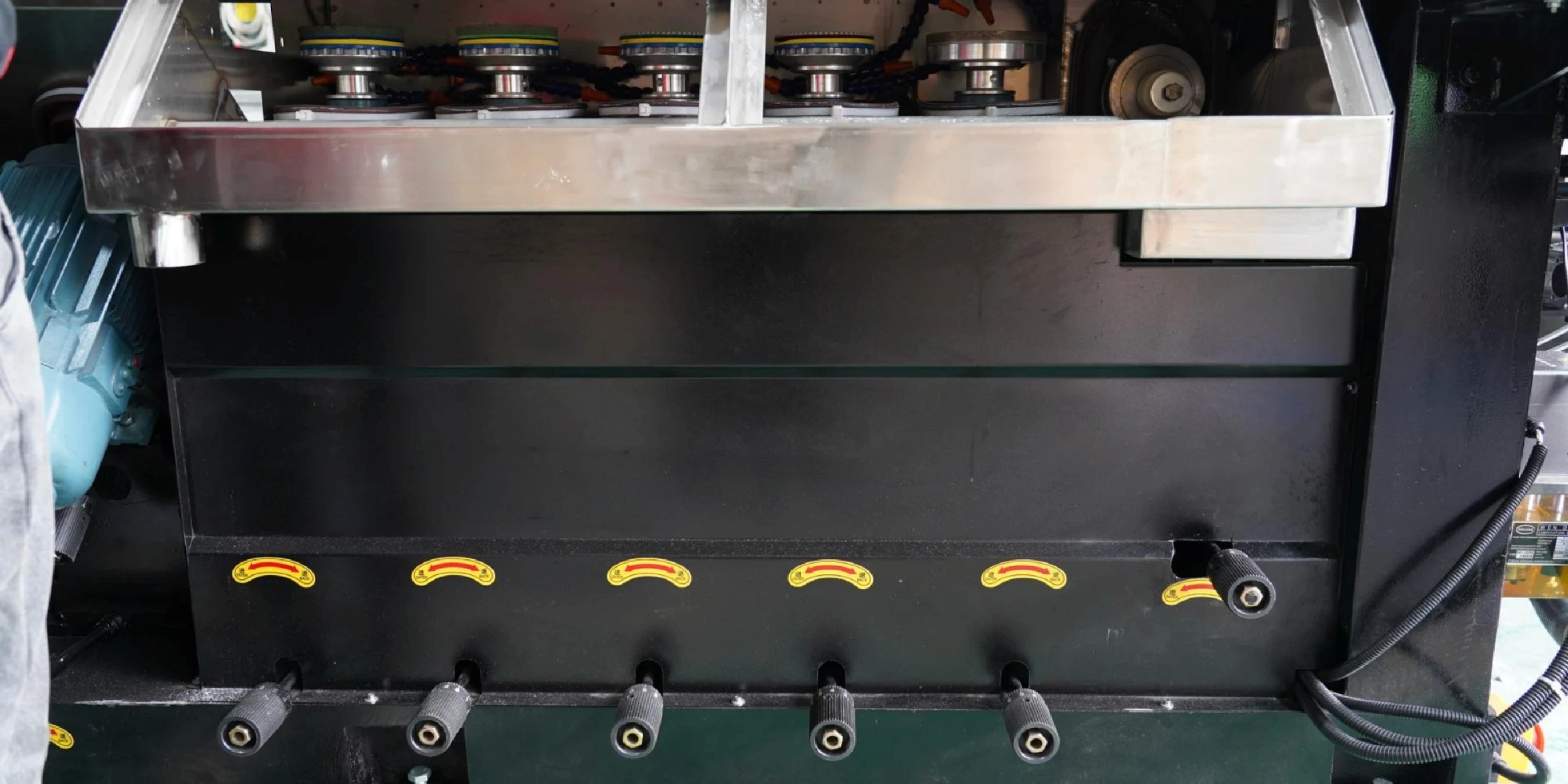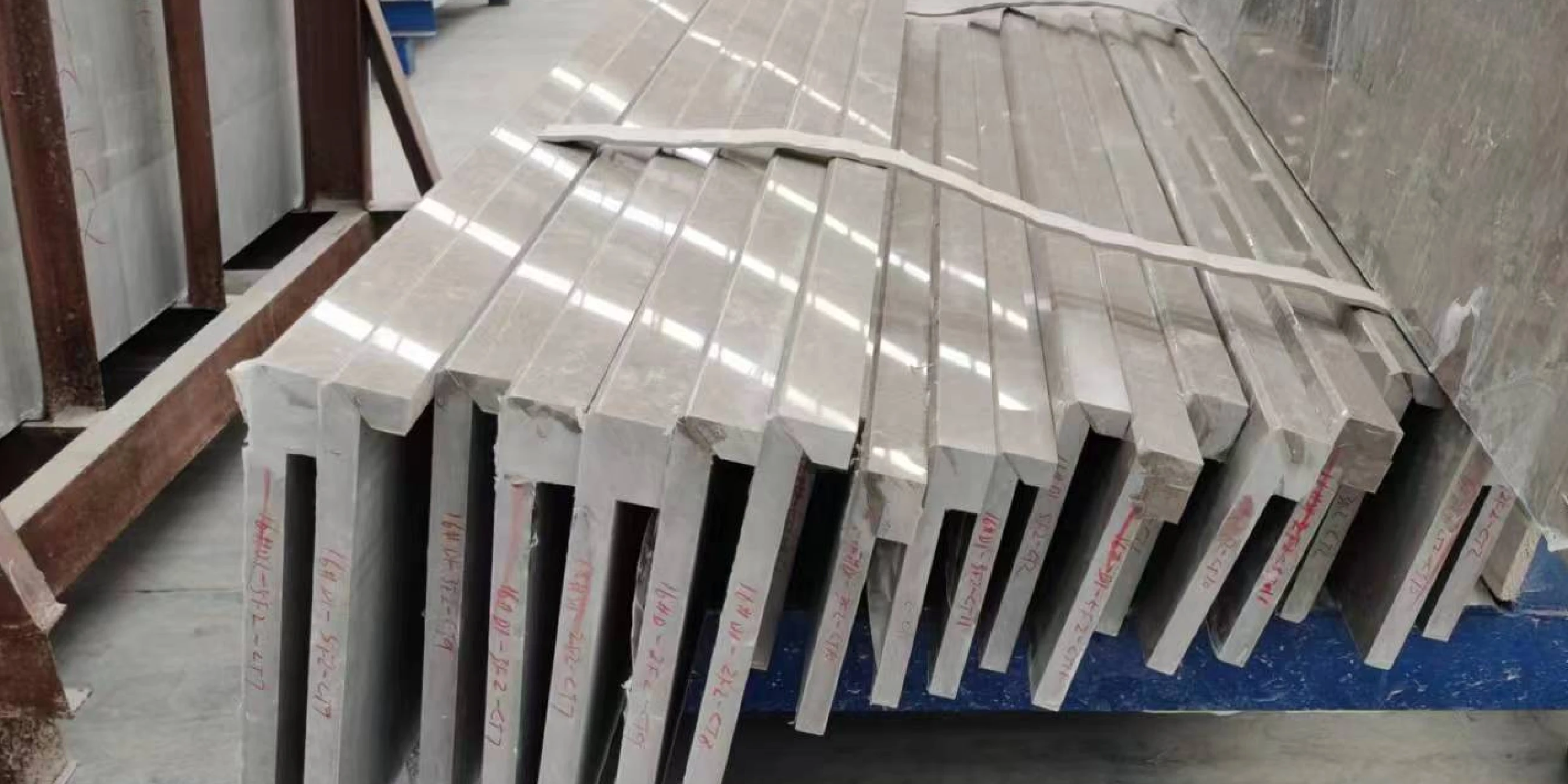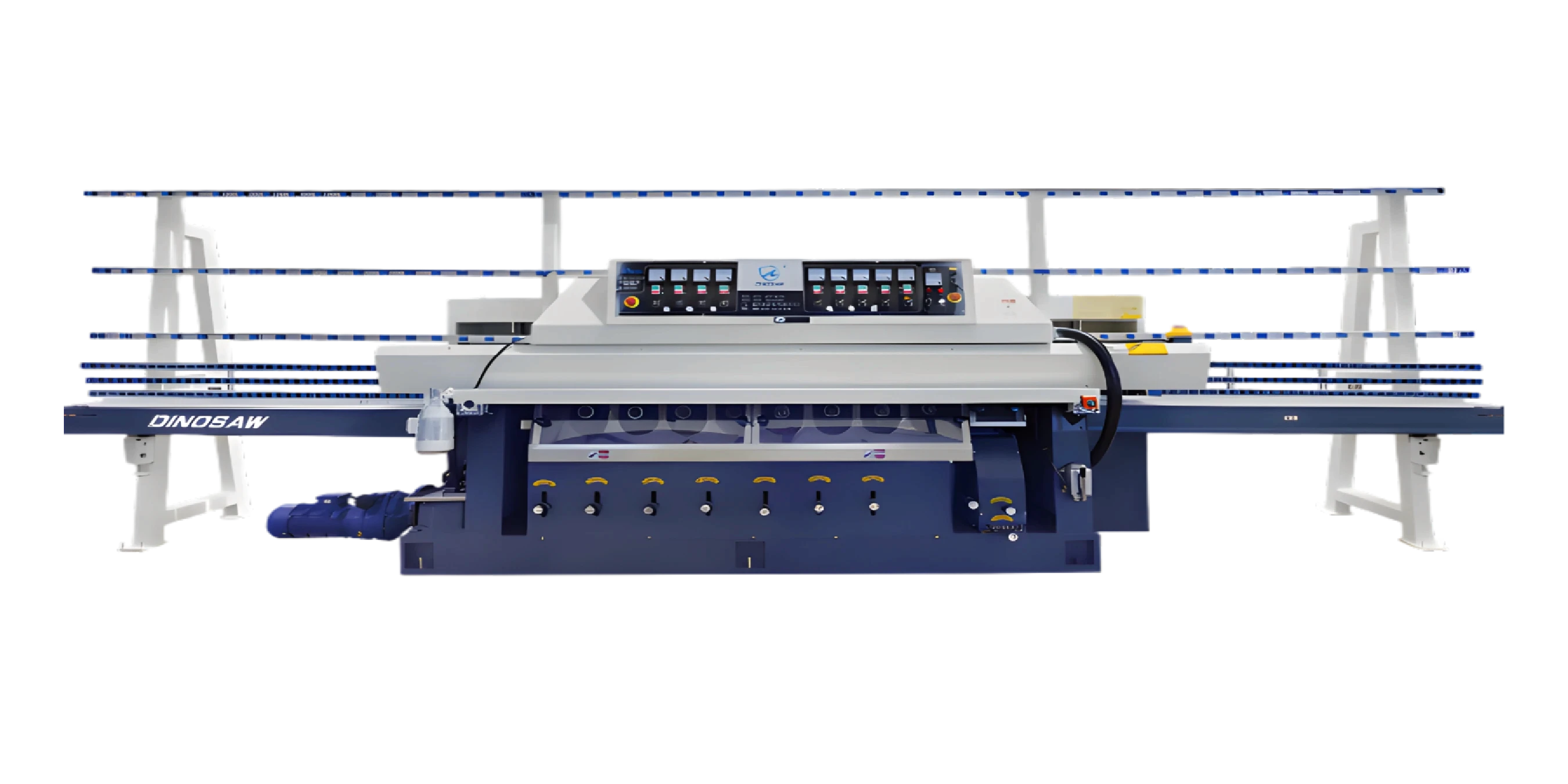Hi, this is Lizzy from Dinosaw ( Not a Robot ). Which Machine ( model ) do you want? Please WhatsApp us now
A strategic guide for decision-makers on investing in automated glass edging. Covers the business case, ROI levers, decision map, and a quick-start checklist.
Investing in an automated glass edging machine is a strategic decision that directly impacts profitability by improving quality, throughput, and safety. This guide distills the essential business case and provides a clear framework for selecting the right technology for your production environment, ensuring your capital expenditure yields a strong, measurable return.
This document summarizes key considerations from applications to maintenance, providing a high-level overview for joint decision-makers.
What is a Glass Edging Machine?
From an application perspective, a glass edging machine is an automated system that produces safe, dimensionally accurate, and aesthetically finished edges on glass panels for industries like architecture, furniture, and automotive.
Technologically, it is an integrated system of mechanical and control components that uses a sequence of grinding and polishing wheels to shape and finish glass edges according to pre-programmed profiles.
Key Specifications Snapshot (LSMB-314/80)
The following specifications are based on the LSMB-314/80 model as an example and are manufacturer-reported. Configurations can vary by model.
- Working Thickness: ≤120 mm
- Process Speed: 10–80 mm/min
- Conveying Belt Speed: 1500–4000 mm/min
- Tooling: 1x Shaping Wheel (Ø150–180 mm), 3x Polishing Wheels (Ø150–180 mm)
- Total Power: 45 kW
- Water Consumption: 1000 L/min
- Overall Dimensions (L×W×H): 7500 × 1200 × 2200 mm
- Weight: ~4 t

Standard Configuration & Options
- Control System: Available with either PLC for repetitive tasks or CNC for high-mix flexibility.
- Wheel Fixation: Pneumatic system for stable grinding pressure and consistent finishes.
- Tool Change: One-button function to release wheel fixation, minimizing downtime.
- Thickness Adjustment: Manual pressure-wheel adjustment to easily accommodate various glass thicknesses.
- Tooling Layout: The quantity and position of grinding and polishing wheels are configurable by model and customer needs.
- Optional Connectivity: CNC models can be equipped with OPC UA or Profinet interfaces for integration with factory MES.
- Filtration Packages: Optional advanced dust and coolant filtration systems are available.
Process Flow: From Load to Finish
- Load: The operator places a raw glass sheet onto the infeed conveyor.
- Clamp: The glass is automatically secured by the conveyor's pressure-wheels as it enters the machine.
- Rough Grind: The first set of diamond wheels performs coarse grinding to shape the edge and remove major imperfections.
- Fine Grind: Subsequent diamond wheels refine the edge, creating a smooth, pre-polished surface.
- Polish: The final set of polishing wheels (resin-bond or felt) creates the desired high-gloss or satin finish.
- Quality Check: The finished panel exits onto the outfeed conveyor for inspection and removal.
Operating Envelope & Typical Jobs
The machine's versatility allows it to handle a wide range of jobs. Achievable edge classes include flat edges with a safety arris, high-gloss polished edges, and decorative beveled edges.
- 6mm Float Glass (Flat Polish): Start conveyor speed near 2.0-3.0 m/min with moderate grinding pressure. This is suitable for standard panels and shelving.
- 10mm Tempered Glass (Arris): Start conveyor speed around 1.0-2.0 m/min with slightly higher pressure. Ideal for safety glass applications like railings and partitions.
- 12mm Laminated Glass (Bevel): Start at a slower speed of 0.8-1.5 m/min with lower pressure to prevent delamination. Suited for high-end architectural and decorative pieces.
All settings should be fine-tuned based on visual inspection of the finished edge, staying within the machine's conveying belt speed of 1500–4000 mm/min.

Who This Guide is For
This guide is for leadership and cross-functional teams (including Procurement, Engineering, and Operations) involved in capital equipment investment decisions. It provides the strategic context needed to evaluate and justify the acquisition of automated glass edging technology.
ROI Levers: The Business Case at a Glance
The business case for automation is tied to three primary ROI levers:
- Reduced Defect Rates: Automation delivers consistent edge quality, minimizing chips and imperfections, which cuts material waste and rework costs.
- Increased Throughput: By consolidating multiple finishing steps into one automated pass, these machines significantly reduce cycle times and increase production capacity.
- Optimized Labor Allocation: Automating the manual, repetitive task of edging frees up skilled labor for higher-value activities like quality control and complex assembly.
Quick-Start Decision Map
The core decision is not whether to automate, but how. The choice between a PLC or CNC system is about workflow, not capability, as both can produce complex profiles.
- For high-volume, low-mix production (e.g., standard architectural panels), a PLC-controlled machine offers the most reliable and cost-effective solution.
- For high-mix, low-volume production (e.g., custom furniture, bespoke projects), a CNC-controlled machine is superior due to its programming flexibility and rapid changeover capabilities.
This decision is explored in depth in our Buyer's Guide, which provides a full If-Then selection tree and procurement checklist.

Resource Library: Distilled Insights
For a deeper dive, our pillar content provides detailed information on key aspects of glass edging technology:
- Applications & Case Studies: See real-world ROI improvements in architectural, furniture, and custom glass fabrication with our case study analysis .
- Technical Principles: Understand how the core architecture, from frame to controls, interacts to deliver a precision finish in our technical deep-dive .
- Operation & Maintenance: Maximize uptime with checklists for daily operation, troubleshooting, and preventive care in the comprehensive O&M guide .
Installation & Utilities Checklist
- Floor & Leveling: A solid, level concrete floor is required to support the machine's weight (~4 t) and ensure vibration-free operation.
- Power Supply: A stable 380–480 V, 3-phase electrical supply is needed, with capacity planned for the 45 kW total power rating.
- Coolant Loop: A closed-loop coolant system is essential to manage water consumption (1000 L/min) and filter glass particles.
- Compressed Air: A connection for compressed air is required for the pneumatic systems.
- Drainage & Dust Capture: Proper drainage for coolant overflow and an adequate dust collection system are necessary for safety and cleanliness.
- PPE: Operators must have access to and be trained on using Personal Protective Equipment (PPE).
Next Steps: From Pilot to Full-Scale Implementation
- Pilot Program: Define a specific project or product line to serve as a pilot. The goal is to establish a clear baseline for your current KPIs.
- Define Acceptance KPIs: Work with your supplier to set clear Site Acceptance Testing (SAT) criteria based on your pilot project (e.g., achieve a <1% defect rate, increase throughput by 30%).
- Standardize & Document: Once KPIs are met, document the successful SOPs, maintenance schedules, and training protocols.
- Scale Implementation: Use the documented success of the pilot program as the business case to scale the investment across other production lines or facilities.

Glossary of Key Terms
- Arris: A small, chamfered edge on the glass, primarily for safety and to prevent chipping.
- Spindle: The component that holds and rotates the grinding or polishing wheel.
- PLC (Programmable Logic Controller): A robust control system for automating repetitive, fixed industrial processes.
- CNC (Computer Numerical Control): A dynamic control system that uses programmed code for high-precision, flexible manufacturing.
- TCO (Total Cost of Ownership): The full lifecycle cost of an asset, including purchase price, installation, maintenance, consumables, and energy.
- Throughput: The rate at which a machine processes material, often measured in meters per minute or pieces per hour.
FAQs - Strategic & Financial
How do I calculate the TCO for a glass edging machine?
To calculate TCO, sum the initial purchase price, estimated installation costs, annual consumable costs (wheels, coolant), energy costs, and projected maintenance labor. Compare this against the expected savings from reduced labor, lower defect rates, and the profit from increased throughput. Our team can help build a TCO model for you.
What is the typical warranty and service level agreement (SLA)?
A standard warranty is typically 12 months for parts and labor. A good SLA should guarantee response times for technical support (e.g., within 24 hours) and define the availability of critical spare parts. This is a key point to negotiate with potential glass edging machine suppliers.
Can we finance or lease the equipment?
Yes, financing and leasing options are often available through third-party financial partners. These options can help manage cash flow by converting a large capital expenditure into a smaller, predictable operating expense. Discuss these options with your sales representative.
How does automation impact our ESG (Environmental, Social, Governance) goals?
Automation positively impacts ESG goals. It improves worker safety (Social) by reducing manual handling injuries. More efficient processing and lower defect rates reduce energy consumption and material waste (Environmental). Effective management of coolant and filtration systems also minimizes environmental discharge.
What is the competitive advantage of owning this technology?
The primary competitive advantage is the ability to deliver higher quality products, faster, and more reliably than competitors who rely on manual or outdated processes. This allows you to command higher margins, win larger contracts, and build a stronger brand reputation for quality and consistency.
How do we ensure a smooth integration into our existing production line?
Successful integration begins with a thorough pre-installation review of your facility layout, workflow, and utility hookups. The DINOSAW Glass Edging Machine is designed for straightforward integration, and our technical team works with you to plan the installation and commissioning process to minimize disruption.
What projects benefit most from straight line glass edging?
Straight line glass edging excels in high-volume production of rectangular or square panels. It is ideal for architectural glass (facades, partitions), retail shelving, and standard furniture components where efficiency, speed, and edge consistency are primary drivers of profitability.
How long is a typical installation/commissioning timeline?
Installation and commissioning typically take a few days to a week, depending on facility readiness and the complexity of the machine configuration. This includes machine placement, utility hookup, leveling, calibration, and Site Acceptance Testing (SAT) to verify performance against agreed-upon KPIs.
What data can CNC models share with an MES?
When integrated, CNC models can share critical production data with a Manufacturing Execution System (MES). This typically includes job IDs, run times, cycle counts, machine status (running, idle, alarm), alarm codes, and basic throughput metrics. This data enables real-time production monitoring and performance analysis.
























 English
English 中文
中文 Italian
Italian Türkçe
Türkçe Português
Português

